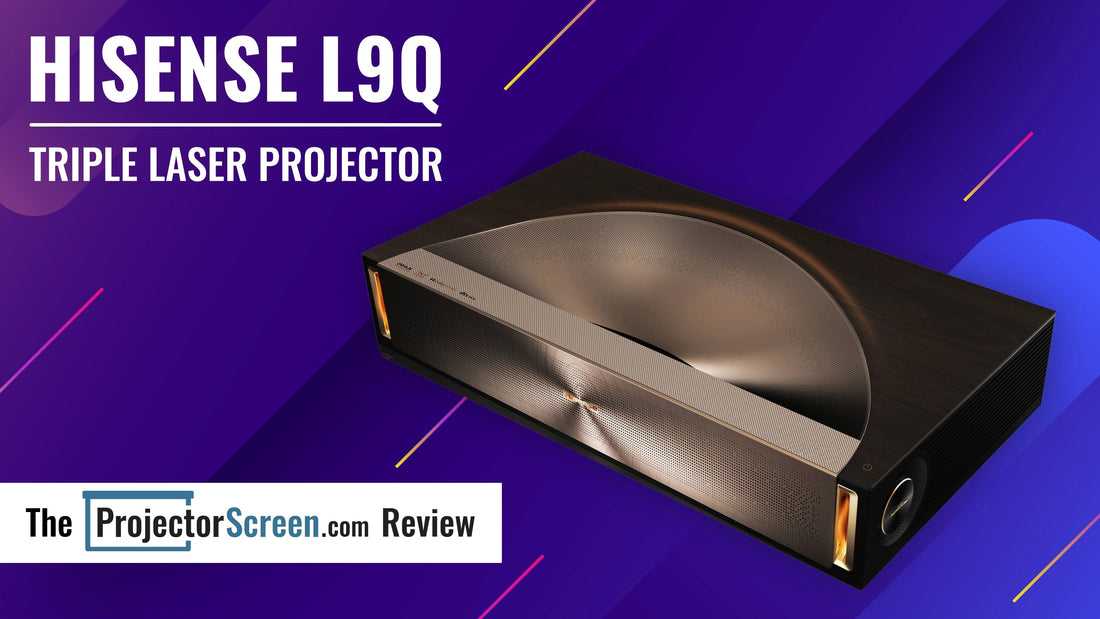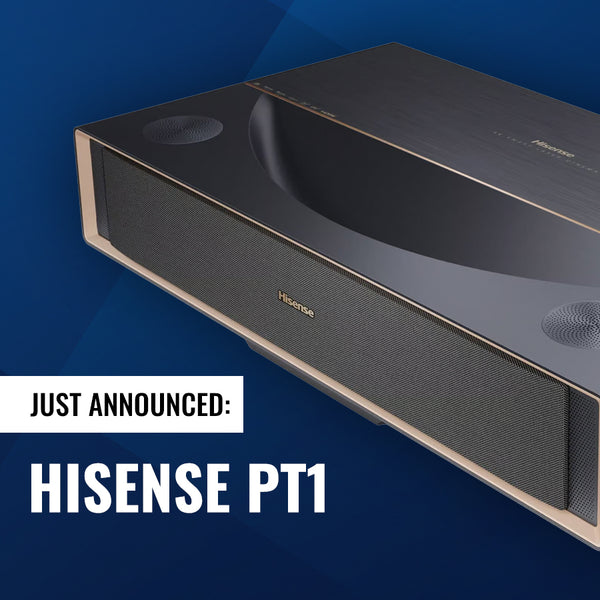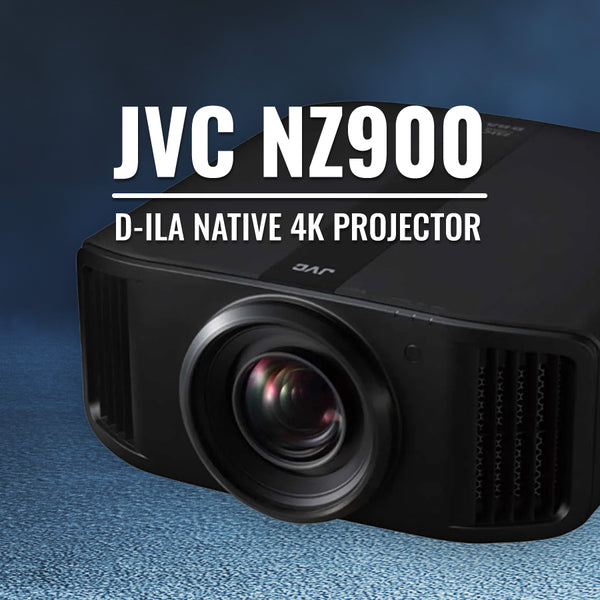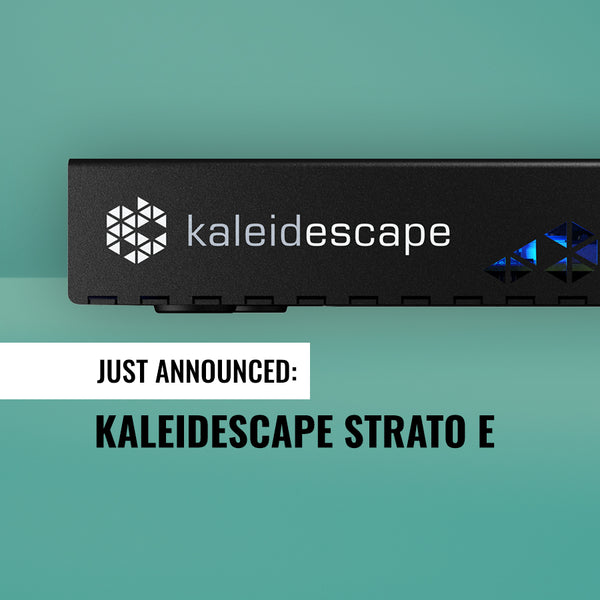Hisense L9Q Triple Laser Ultra Short Throw UST Projector Review

- Exceeds Rated 5,000 Lumens
- Excellent Color Accuracy After White Point Correction
- Very Wide Color Gamut Coverage
- All HDR Formats Including HDR10 With Dynamic Tone Mapping, Dolby Vision, And HDR10+
- Very Short Throw Ratio
- Image Is Sharp And Detailed
- Very Quiet Operation
- Good Built In Audio
- Google TV Operating System
- 25,000+ Hours Of Expected Life
- Responsive Gaming Performance
- Nice backlit remote
- Dual HDMI 2.1 and Dual HDMI 2.0 with eARC
- Visible Rainbow Effect For Those Sensitive To It
- Visible Laser Speckle Depending On Screen Material
- Some UI Bugs
- Variable Black Level Performance
- 9/24/25: Reviewed Firmware Version V02.01.00T.P0901
- 9/26/25: Hisense was at our offices again today beta testing new firmware to be released in October to further enhance black floor, contrast and color shift.
About The Hisense L9Q
Hisense’s new L9Q launches with an MSRP of $5,999 and is a triple laser ultra short throw projector that is rated to output 5,000 lumens, while having 25,000+ hours of laser life. The L9Q exceeded this claim reaching well over 6,000+** lumens. ** (measuring UST lumens is based on angle, and varies widely. With brighter USTs like the L9Q that range for error is higher). Bottom line, it’s a very bright UST projector reaching 200 nits on a 100” Spectra Projection Vantage ALR screen with a real world 0.5 gain.

The L9Q features:
- LPU™ Digital Laser Engine 2.0: Powered by a high-performance chipset, triple laser light, and precision lens, it delivers stunning brightness and contrast, while Pro AI algorithms enhance every frame for vibrant, true-to-life scenes.
- AI-powered PQ Enhancement: Advanced algorithms refine contrast, color, and brightness in real time—upscaling resolution, reducing noise, and optimizing HDR for vibrant, detailed visuals in every frame.
- Ultra-high brightness and contrast: With 5,000 ANSI Lumens brightness and a 5,000:1 contrast ratio, enjoy vivid images, deep blacks, and bright whites—even in well-lit rooms.
- Compact Big-screen Entertainment: With a reduced 0.18 throw ratio, enjoy up to a 200? screen from a shorter distance. Its sleek, compact design fits any space and doubles as an elegant art piece when off.
- Pantone Validated: Featuring advanced triple laser technology, the L9Q achieves 110% of the BT.2020 color space, with color performance professionally validated by Pantone and Pantone SkinTone—so you see colors exactly as the creators intended.
- Sound by Devialet: Powers the L9Q with deep bass, crisp highs, and immersive clarity, professionally tuned by the Opéra de Paris for rich, cinematic sound.

With a throw ratio of only 0.18 the L9Q provides a large image size from very close to the screen.

Google TV operating system runs very smoothly and I never experienced any lag navigating the menus. Google TV OS has every major app available, and many prefer the UI and design of it over other smart TV operating systems.

For 3D fans out there, the L9Q does support 3D playback as well. You will need to acquire some 3D glasses separately.

The built in audio of the L9Q is surprisingly serviceable if you don't have an external solution. In The Witcher on Netflix, Geralt’s deep gritty voice came across clear and convincing. It won’t knock anyone’s socks off but you can’t ask for much more from a built in solution in a UST.

There is excellent connectivity on the L9Q including 4 HDMI ports, 2 of which are HDMI 2.1. eARC is also supported on one of the HDMI 2.0 ports.

Gaming performance is also great with fast responsiveness, excellent feature set, and solid image quality. Hisense claims as low as 12ms of input lag at 120hz when the resolution is 1080P. It also features a game bar for easy game settings access while in game mode. It features two HDMI 2.1 ports for modern gaming consoles or PCs.

Initial Setup and Impressions
Hisense continues to use Google TV OS on the L9Q which is considered by many the best built in OS for streaming services. The navigation of the menu is quick and easy to understand, and the backlit remote is great to have in a dark room. Downloading new apps can be done from the home menu and/or voice search through the microphone on the remote. You can also sync to your Google cloud storage of your photos to play as a screensaver if you want to have a large display doubling as a digital photo album when not actively watching.

There are plenty of picture mode presets available to choose from such as Filmmaker, Theater, Standard, Vivid, IMAX Enhanced, Dolby Vision Bright and Dark, and more which will automatically change depending on if the source is SDR, HDR10 or Dolby Vision. For accuracy enthusiasts using Filmmaker mode would be recommended as by default it has motion smoothing and other processing features disabled.
Very high luminance output is the main strongest aspect of the L9Q, and the reason to consider it over the PX3-Pro in the Hisense UST line up. Even with a low gain ALR screen I was measuring around 200nits on a 100” screen. Which offers a very viewable experience in a room with moderate lighting, and pretty good HDR performance in a dark room.
Here is an example of The Greatest Showman on an ALR screen with an overhead light on vs off in a dark room. Of course there is a notable contrast difference, but the image is still impressively good with the lights on. 16:9 content without black bars will appear even better by eye, and not having any reflections from light sources is an advantage over large reflective TVs. The darker scene is difficult to make out all the detail with the lights on, but the same holds true for TVs with dark scenes in a brighter room as well.
The HDR impact of bright lights or sun flares have enough separation from the rest of the image to give an impressive overall image. Hisense’s Dynamic Tone Mapping works well even with highly graded 4000 nit content, and the L9Q also supports Dolby Vision which also works well for tone mapping highly graded content.

The L9Q is able to fill up to 200” screens, though I would suggest up to 150” for lower gain ALR screens being a good balance of luminance and size. Overall contrast performance is strong, though the PX3-Pro has a little bit of a lower black floor. In most general scenes the L9Q and PX3-Pro would look very similar but with a larger image size potential on the L9Q, or more headroom for brighter scenes.
The built in audio system is surprisingly usable with adequate bass for deep male dialogue and plenty of usable volume to fill a reasonably sized living room. For blockbuster movies and video games most will still want an external audio system, but for general usage the built in audio performance is quite good.
I did extensive testing in HDR10 using Dynamic Tone Mapping on and off as well as other adjustments to settings. This is demonstrated further below, but leaving Dynamic Tone Mapping turned on in HDR10 is recommended in most cases. In situations with higher gain and smaller screens when watching general HDR content or when paired with an external video processor that handles the tone mapping are instances where it could be turned off.
For motion testing I used the scene from Baby Driver as he walks around the city and the camera is constantly moving. I also looked at Planet Earth 2 which has a lot of panning camera shots. Native 24Hz motion handling with interpolation settings set to Film is excellent and what I used for my review. Any higher setting of interpolation had visible Soap Opera Effect (SOE) which I personally don’t like though many do. Going above the Film setting has moderate SOE that gets stronger as the setting is increased. However, if you like to have some SOE, it did so very cleanly with minimal visible artifacts until the highest setting.
When it comes to sharpness and detail clarity, even in Filmmaker mode with sharpness turned to 0 and detail enhancement settings turned off there was a constant forced over processing as visible in this pattern which reveals ringing artifacts.


Color performance of the L9Q is excellent, as we have come to expect from Hisense UST projectors recently. After correcting the white point color accuracy is very accurate. Skin tones are very natural and free of any gradient artifacts or posterization issues.

Speaking of posterization, the L9Q passes my stress test scene from 1917 with flying colors (pun not intended). Color transitions on the back wall from the glow of the oven are smooth and free of any rings or sudden shifts.

Taking a look at some scenes from Inside Out that have color outside of P3 and take advantage of BT2020 coverage shows very saturated and impressive color performance as well.

Using Spears & Munsil Benchmark disc HSV BT2020 sweep there is again smooth color transitions and a wide coverage. I measured the L9Q to cover 94% of BT2020 in xy and 97% in uv.

Shadow detail, dark scenes, and contrast are up next. The L9Q has really good contrast for a DLP based projector, but does fall a bit short on the rated “native full on full off contrast” of 5,000:1 without using specific scenario settings that would not be used by anyone in the real world. However using filmmaker mode with Scenario Enhancement set to Dark Detail would get around 3,500:1. While that doesn’t necessarily count as native as it’s adjusting the black floor dynamically a bit, it does so quickly and without a shift most people would notice (as of recent updates). With this setting off it is still pretty close to 3,000:1. However in-scene real world performance is still great and very close to the lower lumen PX3-Pro and without a side by side comparison would be essentially impossible for most to notice.
Here are two images from 1917 taken at two different camera exposure settings. The first represents closely to how dark the image was in person, and the second image was over exposed to show the visible detail in the image in person. No settings were changed on the projector, only the camera.
And here are a few pictures also from another scene just after the previous one in 1917. Again taken at different exposure levels, but this time to show contrast in a brighter scene with flames in it. Also to show the detail level of the flames (lower exposure) along with the brightness of how the flames appear in person (higher exposure).
When trying to expose for the pattern on Spears & Munsil to show the Dynamic Range Low, the camera has to be over exposed to show it. The L9Q has great shadow detail at coming out of black as can be seen here with smooth steps between each bar.

Contrast is very ADL (average display luminance) dependent, and really shouldn’t be summed up into one or two numbers or tests. Here are pictures of a few different black/white images of varying ADL.
As for uniformity the L9Q does also have some mild uneven color shift across the image though a little better than the PX3-Pro, however in real content it's much harder for most to notice.
Coming back around to the Dynamic Tone Mapping tests, here are some examples of how wildly different the image can be in higher graded content with DTM on or off. These images were taken under exposed specifically to show the detail being retained in the highlights. These are from Batman V Superman, during the explosion of Doomsday.
This is the same as the one above but with the exposure set back to normal so you can see the vibrancy of the image.

DTM on will retain far more detail in brighter images like these, and in many cases will make the scene look completely different than when it is off. With it off the image is brighter (not peak but APL) but with a large loss of detail in bright scenes like this.
This scene from Aquaman has high luminance color for the armor as well, and the L9Q represents it well (this is from the Dolby Vision version with the L9Q set to Dolby Vision Bright after calibration). The overall scene is very high APL and it is doing a great job of keeping the detail of the lines in the background visible without clipping the highlight details.

The L9Q also has a setting called “Scenario Enhancement” which can be off, set to “Dark Detail Enhancer” which can lower the black level a bit (with a small hit to peak brightness) or to “High Dynamic Contrast” which seems to change the upper brightness level in brighter scenes a bit, but is very subtle and hard to tell (even with measurements) what it is really doing aside being a dynamic laser adjustment focused on adjustments to brighter scenes. There have been multiple firmware updates that have continued to adjust how these settings work, or if they are even available. Your results may vary, but in general I have left this on set to High Dynamic Contrast. The Dark Detail Enhancer was either bugged or unavailable for most of my time testing and was recently added back in after addressing the color shifting issue it had in earlier firmware. This review will continue to be updated as new firmware releases come out that adjust this or any other major changes.
Hisense L9Q SPD

Measurements and calibration were done using Colorimetry Research CR-250 spectroradiometer and CR-100 colorimeter, Murideo 6G pattern generator, and Calman Ultimate software.
Considering projectors are a three part system (projector, screen and environment) and all three parts affect the “Out Of The Box” accuracy I will be doing all OOTB color observations AFTER correcting the white point (Gain control setting) to D65. This not only gives a fair playing field for different projectors used with different screen materials but also shows how the color performance not just of a projector but any display is from the factory (factory variation from unit to unit). As all the colors will shift together as the white point is corrected.
SDR FMM “OOTB” on my ALR screen measures like this, overly magenta and gamma is 2.2 OOTB when SDR standard is 2.4.

Changing gamma to 2.4 corrects the gamma quite well, and this demonstrates better my stance on correcting the white point before evaluation of color performance.

Simply correcting the gain setting and changing gamma to 2.4 gives a very good grayscale result in SDR, so let's move on to judge color now.

At D65 white, the SDR color performance is great, coming in with an average colorchecker SG of 1.23 dE2000, and a max of 3.43.

In HDR10 with the default contrast of 50, the EOTF undertracks pretty heavily. Increasing contrast will raise it to track better, but then highlights are completely blown out.
HDR10 color accuracy is also excellent at D65 coming in with an average dE2000 error of 0.95 (without luminance).

DV Dark EOTF tracking also undertracks EOTF, while DV Bright tracks correctly.
Then in DV Bright at D65, color is also very good at a dE2000 of 1.7.

Settings Recommendations
Setting recommendations for any advanced or calibration menu settings are unlikely to apply to your specific sample, screen and room combination
For SDR:
- Filmmaker Picture Mode
- General Menu - All Off
- Laser Luminance Menu - Laser Luminance (locked with SE enabled), Scenario Enhancement High Dynamic, Contrast 40, Black Level 0, Dark Detail Off, Gamma 2.4, HDMI Dynamic Range Auto, HDR Enhancer Off
- Color Menu - Color 50, Hue 0, Color Temperature Warm 1, Color Temperature Adaptation Off, Color Space Auto, Dynamic Color Enhancer Off
- Clarity Menu - Sharpness 0 (or to preference), Smooth Gradient Off, Super Resolution Off, Noise Reduction Off, MPEG NR Off, Motion Enhancement Film (or to preference)
- Calibration Menu 2pt - R / G / B Offsets all 0, R - Gain -9, G - Gain 0, B - Gain -10
For HDR:
- Filmmaker Picture Mode
- General Menu - All Off
- Laser Luminance Menu - Laser Luminance (locked with SE enabled), Scenario Enhancement High Dynamic, Contrast 50, Black Level 0, Dark Detail Off, Gamma ST2084 Locked, Active Contrast Off, Brightness Enhancer Off, Dynamic Tone Mapping On, HDMI Dynamic Range Auto
- Color Menu - Color 50, Hue 0, Color Temperature Warm 1, Color Temperature Adaptation Off, Color Space Auto, Dynamic Color Enhancer Off
- Clarity Menu - Sharpness 0 (or to preference), Smooth Gradient Off, Super Resolution Off, Noise Reduction Off, MPEG NR Off, Motion Enhancement Film (or to preference) Calibration Menu 2pt - R / G / B Offsets all 0, R - Gain -11, G - Gain 0, B - Gain -10
For Dolby Vision:
- Dolby Vision Bright Picture Mode
- General Menu - All Off
- Laser Luminance Menu - Laser Luminance (locked with SE enabled), Scenario Enhancement High Dynamic, Contrast 50, Black Level 0, Dark Detail Off, Gamma 2.2 Locked, Active Contrast Off, Brightness Enhancer Off, HDMI Dynamic Range Auto
- Color Menu - Color 50, Hue 0, Color Temperature Warm 1, Color Temperature Adaptation Off, Color Space Native Locked, Dynamic Color Enhancer Off
- Clarity Menu - Sharpness 0 (or to preference), Smooth Gradient Off, Super Resolution Off, Noise Reduction Off, MPEG NR Off, Motion Enhancement Film (or to preference)
- Calibration Menu 2pt - R / G / B Offsets all 0, R - Gain -15, G - Gain 0, B - Gain -14
Final Conclusions
The Hisense L9Q is a flagship UST projector with excellent light output, color performance and loaded with features. The built in audio is among the best I have heard from any UST and the design of the body is quite unique. Reaching over 5,000 lumens (more importantly ~200nits on a 100” ALR screen) with good contrast and quiet operation it is hard to complain about anything with the L9Q. There are some UI/software bugs with different firmware versions but Hisense has been very good at releasing firmware updates quickly that have been making notable improvements and changes. The black level seems to fluctuate but has also been changing with firmware updates, so check back to see as new firmware updates are released if this changes. Visible rainbow effect and laser speckle are expected with the technology and how noticeable that will be will vary person to person and depending on what screen is used.
With enough light output to get around or close to 100 nits on a 132-150in ALR screen, the L9Q can offer a very large viewing experience in a room with moderate lighting like a large living room or family room.The L9Q supports every HDR format, has 3D support, low input lag for gaming, eARC support with 4 HDMI ports (2x 2.1), it offers everything you could ask for or expect in a flagship offering. With an MSRP of $5,999 and not much competition from other brands in the 5,000 lumen home consumer space the L9Q is positioned well for what it offers.





































